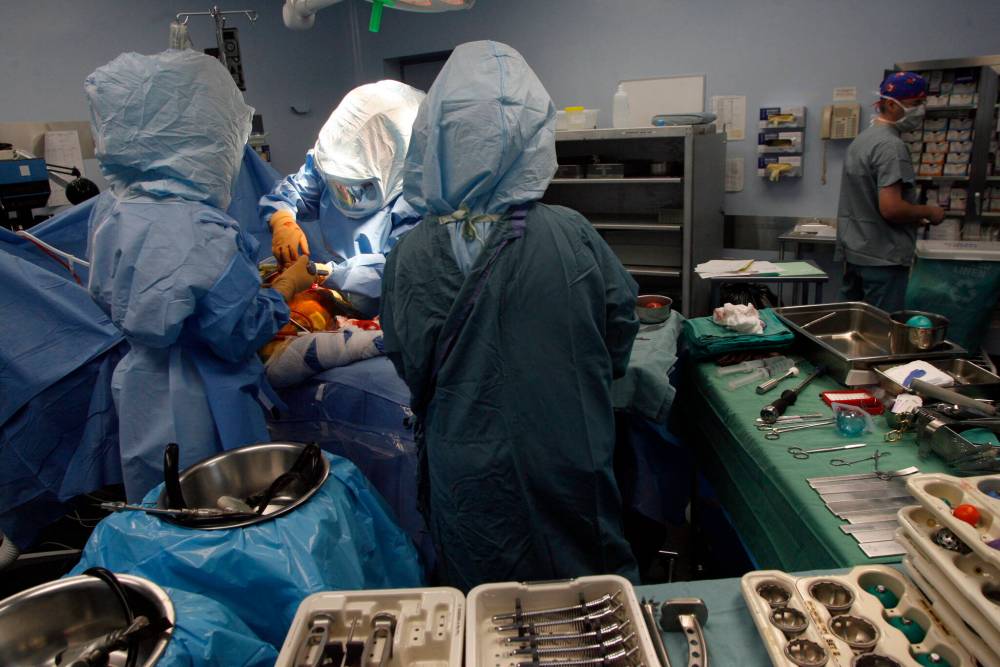Centralized system a start for wait times
Advertisement
Read this article for free:
or
Already have an account? Log in here »
To continue reading, please subscribe:
Monthly Digital Subscription
$1 per week for 24 weeks*
- Enjoy unlimited reading on winnipegfreepress.com
- Read the E-Edition, our digital replica newspaper
- Access News Break, our award-winning app
- Play interactive puzzles
*Billed as $4.00 plus GST every four weeks. After 24 weeks, price increases to the regular rate of $19.00 plus GST every four weeks. Offer available to new and qualified returning subscribers only. Cancel any time.
Monthly Digital Subscription
$4.75/week*
- Enjoy unlimited reading on winnipegfreepress.com
- Read the E-Edition, our digital replica newspaper
- Access News Break, our award-winning app
- Play interactive puzzles
*Billed as $19 plus GST every four weeks. Cancel any time.
To continue reading, please subscribe:
Add Free Press access to your Brandon Sun subscription for only an additional
$1 for the first 4 weeks*
*Your next subscription payment will increase by $1.00 and you will be charged $16.99 plus GST for four weeks. After four weeks, your payment will increase to $23.99 plus GST every four weeks.
Read unlimited articles for free today:
or
Already have an account? Log in here »
It’s encouraging news that Manitoba is performing more hip and knee replacement surgeries than in recent years.
The expansion of orthopedic surgery capacity — including at Selkirk Regional Health Centre — is a positive step toward addressing the province’s long-standing backlog.
But despite these improvements in output, Manitobans are still waiting far too long for these critical procedures.

MIKE APORIUS / WINNIPEG FREE PRESS
Manitobans are still waiting too long for critical procedures.
According to the province’s most recent data, the median wait time for hip replacement surgery has climbed to 29 weeks — the highest in seven years. Wait times for knee replacements are also longer than in the past two years and are now the second highest they’ve been in the same seven-year span.
That’s a troubling trend for patients who often live in chronic pain and whose mobility and quality of life depend on timely care.
The fact that Manitoba is performing more surgeries but still seeing longer waits highlights the complexity of health-system reform. More surgeries do not automatically translate into shorter waits if demand is growing faster than capacity or if the system is still sorting through inefficiencies left over from years past.
One possible factor behind the recent rise in wait times is the province’s new surgical wait-list information management system, rolled out last year. The project — long overdue — requires surgeons who want to book operating room time to submit all patient information into a centralized, provincewide database.
The data are shared among primary care doctors, hospitals, surgeons and central organizers, offering, for the first time, a comprehensive view of surgical demand and patient wait times across the system.
This level of transparency and co-ordination has never existed before in Manitoba. For decades, individual surgeons managed their own wait lists, often on paper and sometimes haphazardly. It wasn’t uncommon for patients to be lost in the shuffle — literally buried in a pile of paperwork — as surgeons juggled their own lists without visibility into the broader system.
Under that old, fragmented model, some surgeons had far longer wait lists than others. In some cases, a patient’s wait depended more on which specialist they happened to be referred to than on how urgently they needed surgery. That’s precisely the kind of inequity the new centralized system is designed to fix.
By giving primary care doctors access to a shared database, the new system makes it easier to refer patients to the next available surgeon rather than the first name that comes to mind. It also allows the province to better track and manage surgical demand, identify bottlenecks, and plan resources based on real-time data.
Still, these changes come with short-term side effects. As surgeons begin uploading their patient backlogs into the centralized database, it’s possible that some people who had been waiting the longest — perhaps overlooked in the old paper-based system — are now finally being scheduled for surgery.
If that’s the case, the median wait time may temporarily rise as the system corrects itself and begins to treat those long-waiting patients.
That would be a positive development, even if it looks bad in the statistics. But it’s also unclear whether this is what’s happening, or whether other factors — such as staffing shortages, operating room limits, or rising surgical demand from an aging population — are driving wait times higher. The provincial government hasn’t provided enough analysis or data to say for certain.
The bottom line is that while Manitoba’s new system is an important step forward, it has yet to deliver the result that matters most to patients: shorter waits for surgery. Until that happens, the government cannot credibly declare victory on reducing surgical backlogs.

